If you have only recently left life as a student, things can be pretty daunting. There are lots of things to learn once you’ve entered the employment world. One of the best advice you can follow is to gain solid knowledge in managing your finances. Don’t know where to start? Just browse through this blog of ours for some valuable information.
One such thing that you, as someone fairly new as an employee (as in your first or second year), should know is how to properly pay your income tax. We know it might seem complicated, especially as they never taught you this in school, but we’ve detailed the basics for you here.
Hopefully, after you’ve finished reading this article, you can be on your way to being a responsible Malaysian and help with the country’s development. Here are the basic things you should know about income tax in Malaysia:
- Who should pay income tax?
You qualify as an income taxpayer if you fall into the following:
- Single individuals with an annual income above RM34,001 (after EPF deductions)
- Married individuals with an unemployed spouse with an annual income of RM46,001
- Individual who runs a business (including those who make a loss)
- New employees with PCB (Monthly Tax Deduction)
- Individuals with taxable income
- Individuals who sell/buy real estate
- When is it due?
For individuals NOT running a business, the deadline for filing their income tax is April 30. For individuals who DO run a business, the due date is June 30.
- How do I pay my income tax?
Taxpayers can start submitting their income tax return forms through the e-Filing system starting from March 1 of every year, unless otherwise announced by LHDN. Unlike the traditional income tax filing, where you have to print out the income tax form and fill it in manually, the e-Filing income tax form calculates your income tax for you automatically.
You can pay through various methods, such as over the counter, e-banking, collection agents, ATMs, CDMs, and telebanking. You can also pay your income tax via credit card.
- What is chargeable income?
Chargeable income, also known as taxable income, is your total annual income minus all the tax exemptions and tax reliefs you are entitled to.
- What are tax relief and rebate?
Tax reliefs are used by a taxpayer to deduct certain amounts for money expended in that assessment year. These reliefs are used to encourage certain spendings (such as books and sports equipment) or to lighten certain financial loads (such as the medical expenses of parents). A full list of these reliefs can be found here.
Most people confuse income tax reliefs with income tax rebates. The difference between the two is: a tax relief is a deduction from the total income to derive your chargeable income, whereas a tax rebate is deducted from the actual taxed amount. A full list of these rebates can be found here.
- What documents should I keep?
All individuals should be prepared to be audited by Lembaga Hasil Dalam Negeri (LHDN – the Inland Revenue Board). Therefore all documents and receipts regarding your income and relevant tax reliefs and rebates should be kept. These documents should be kept until a period of seven years from the year of assessment.
- What is PCB?
PCB is a Monthly Tax Deduction. It is a mechanism in which employers deduct monthly tax payments from the employment income of their employees. Employers rely on an employee’s personal data submitted to their Human Resource (HR) department to compute monthly MTDs.
Despite having PCB, individuals who wish to reduce their taxable income through tax reliefs and rebates should still file their income tax returns.
If you have overpaid your taxes through PCB, you can get back the additional taxes you’ve paid in the form of tax return or tax refund. If you are using income tax e-Filing to file your tax and you provide your bank account details correctly, you will be getting your refund credited directly into their bank accounts within 30 days after the declaration is made.

